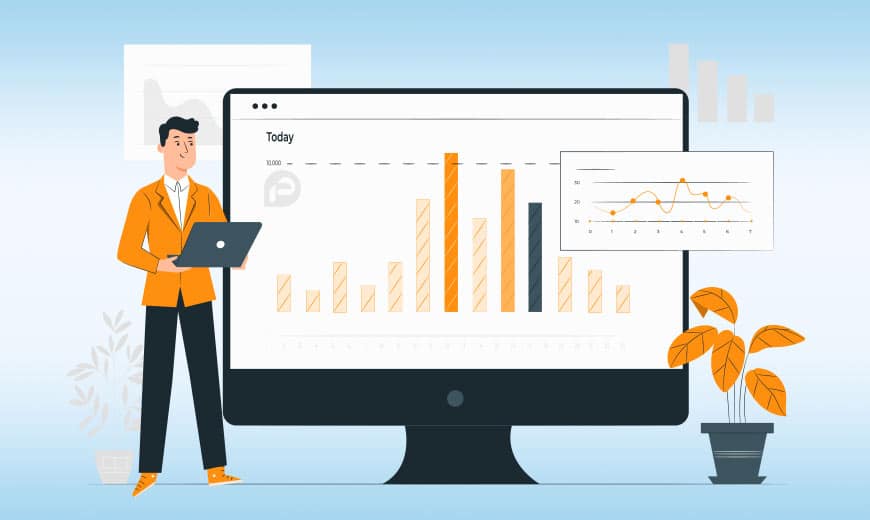The relationship between SEO and site search are two key factors in increasing users’ access to the content they want. SEO directs users to the site through Google search results, but site search helps them find the information or products they want faster after logging in.
In modern SEO, producing valuable content that is tailored to users’ needs is of great importance, but with the increase in the number of pages, products, and articles, it becomes difficult for users to find information manually. This is where internal site search comes into play as an effective solution. In this article, we’ll look at why it’s important to understand the connection between SEO and on-site search.
فهرست مطالب
ToggleThe Importance of the Connection Between SEO and On-site Search
✅ Improve User Experience: An extensive navigation menu can help users, but it can’t cover every section of your site. Investing in on-site search makes the process of finding information faster and easier for users.
✅ Optimize Content Strategy: Analyzing on-site searches shows what products users are looking for the most. This information helps you optimize your content, products, and marketing strategy.
✅ Discover new opportunities: If a large number of users are searching for a product or content that is not on your site, this is a golden opportunity to add it to your business.
✅ Increase conversion rates and sales: On e-commerce sites, about 30% of users use internal site search, and these users account for up to 14% of the site’s total revenue. A fast and accurate search experience can increase purchases and conversion rates.
Optimization with a focus on the relationship between SEO and site search
There are various metrics to measure the effectiveness of site search. An effective internal search system should allow you to analyze and review data to better understand user behavior and evaluate search performance. Using this information, you can improve your site and enhance the user experience to make searches faster and more accurate.

Some important metrics include:
Queries
Understanding exactly what a user needs is the foundation of SEO. Analyzing queries, or the information users enter into the search bar, is a useful way to understand these needs. Searches are the best tool for identifying user desires and help you identify the most popular topics, content, or products. Using this information, you can implement strategies such as displaying popular results on the homepage, moving popular items to the top of search results, or adding relevant content to your site.
Keywords
Keywords can identify topics that are important to customers. These words give you insight because they show you the different ways customers search for the same topic. Your site visitors may be using similar terms in search engines. Analyzing your on-site search data can help you find new keywords and prioritize them for activities like pay-per-click (PPC) and other SEO activities. Understanding this model of the relationship between SEO and on-site search can help you broaden your keyword horizons.
Conversions
While the definition of a conversion may vary from business to business, it is still a very important and relevant metric to track. A conversion can include adding a product to a cart, making a purchase, spending time on a piece of content, or signing up. Conversion tracking helps you understand which queries are performing better than others. It also helps you decide which products are more valuable to customers. For example, if you see that some queries have low clickthrough rates but high conversions, you can make relevant products more visible to customers.
In general, items and content that lead to conversions are more relevant to users and can help with campaigns, product strategies, SEO, and even improve offline businesses. Therefore, a direct link between conversions and revenue is an essential metric to track.
Click-through rate

Click-through rate (CTR), or impression-to-click ratio, is an important metric for measuring the relationship between SEO and site search and how users interact with your site. In general, a high click-through rate indicates that users are satisfied with your site. If your site has a low click-through rate, you may not be meeting your users’ needs. It can be helpful to reexamine the relationship between the search term and the pages you’re showing users.
Click Position
Checking click position can help you assess the accessibility of different content and products on your site and understand how accessible they are to visitors. For example, if popular or new products have a low click-through rate, it means that visitors are having trouble finding them. This indicates that you need to work on some queries (for example, by improving their ranking). Using this information, you can better understand the relationship between the search term and the pages that are shown to visitors. Click-through analysis also gives you a more detailed view of user interests, which can be very useful in guiding SEO and other online and offline activities.
Analyze the Relationship Between SEO and Site Search with Index Pages
Major search engines like Google are able to collect index pages of internal search results of sites. In the past, this seemed problematic because organizations assumed that visitors did not want to see internal search results of a site, especially when using a general search engine like Google. For this reason, it was common to use a method to prevent bots from indexing the search pages on their site.
However, recently, some large e-commerce sites have allowed Google to collect index pages of their internal search results of their sites and have found this method to be a successful strategy. This allows visitors to receive a set of relevant results from a search engine like Google or Bing, rather than viewing a specific product or content page.
Benefits and Risks of Indexing Index Pages
While this method has some benefits, it also comes with a few risks. The main risk is that if you don’t monitor it closely, bots may index your site’s internal search results pages for every keyword. This can lead to low-quality, spammy pages that severely reduce the quality of search results.
However, allowing bots to index index pages can enrich the content of your pages. However, it should be noted that bots may also index low-quality pages that are not useful for users’ needs.
In addition, crawling index pages by bots can impact the budget of your page data collection operation. A large number of web page URLs indexed by bots can reduce the quality of search indexed pages, a problem that Google calls “low-value URLs.” This problem is especially important for large, high-traffic sites, but even small sites can have problems getting their content to show up.
Ultimately, with proper research and planning, you can minimize the risks associated with indexing pages and build a site search strategy that covers both SEO needs and user satisfaction.
The effectiveness of the relationship between SEO and site search
The relationship between SEO and site search is of great importance. Because websites that perform well and provide a positive user experience tend to rank better on search engines like Google. Search performance has a direct impact on the quality of your site visitors’ interactions and their likelihood of engagement. To ensure that visitors are happy with your site search and businesses benefit from it, they need to understand how to optimize search for user engagement. In this regard, businesses can focus on several key factors:
Key factors in optimizing site search
- Visual factors: Using images in search results can make the user experience more engaging and user-friendly.
- Relevance of search results to search content: A poor search experience can drive visitors to other sites. Therefore, providing relevant results that align with business ranking rules is essential.
- Page load speed: Small delays in loading may seem insignificant, but users are sensitive to these delays. Therefore, search performance must be built on a strong infrastructure to avoid any frustrating delays.
These are just some of the key aspects of site search that can improve site performance. If implemented correctly, businesses can deliver a better user experience while simultaneously pursuing SEO goals to increase customer satisfaction.
In conclusion
In the article above, we discussed the metrics and the importance of understanding the relationship between SEO and site search. Internal search site not only improves the user experience, but also has a direct connection to search engine optimization. Using internal search data, you can better understand user needs, address site deficiencies, and make your SEO and marketing strategy more targeted. Blueweb’s professional team is with you in search engine optimization for your website and providing a user-friendly design.
Initial publication date: 11/02/2000
Update date: 11/15/2003




